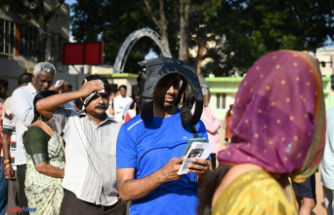Munich (dpa/lby) - mammoth, cave bear and wild horse - archaeologists discovered thousands of animal bones and man-made tools from the Paleolithic during an excavation in Middle Franconia. Experts speak of an extremely rare and important find. "It will help to understand our human beginnings, to complete our picture of early humans," said the head of the Bavarian State Office for the Preservation of Monuments, Mathias Pfeil, on Thursday in Munich.
According to the scientists, the finds indicate that the site in the district of Ansbach once served as a resting place for people. In a study area of only one square meter, they dug up 300 bones and teeth of various animals, including the remains of cave bears, wolves, mammoths, rhinos and wild horses. They also found a piece of flint there.
The experts explained that a bone fragment dated to 40,000 BC showed cut marks that probably came from such a sharp-edged piece of flint. It is not yet possible to say whether Neanderthals or anatomically modern humans were at work. At that point in time, Homo sapiens sapiens was just about to immigrate to Europe.
According to research, at times only a few thousand people lived across Europe during the Paleolithic period, Pfeil said. "This makes it clear how extremely rare a site like this is and what significance it has for science."
Most of the bones came from cave bears, which later became extinct. It was unusual that these were found in an open field. Analyzes should now show whether the rest area was in a former, eroded cave or in the open air. It is also unclear whether the finds are the remains of human prey or whether they got there by other means.
The team also found prehistoric settlement remains around the site, presumably from the Early Bronze Age, the pre-Roman Metal Age and the Roman Empire, as well as two graves from the early Middle Ages.












